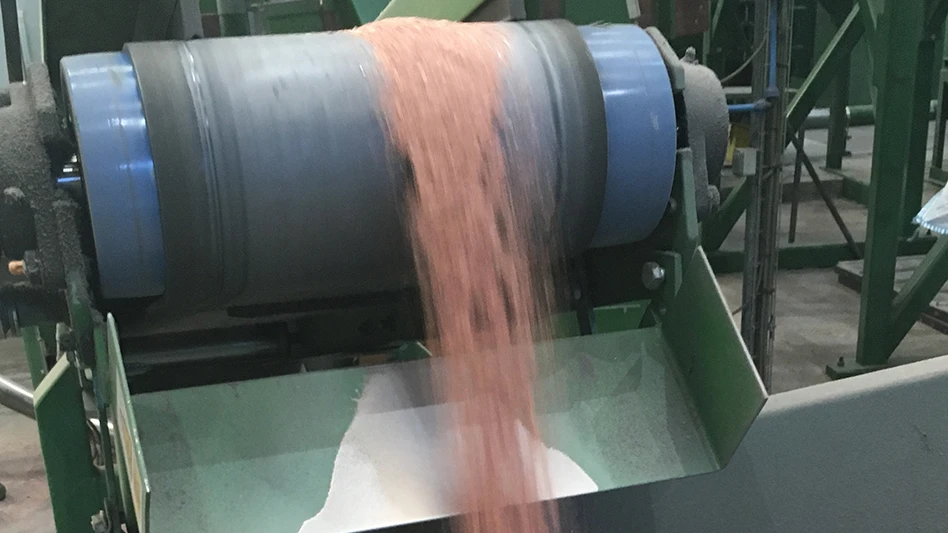
Recycling Today archives
Pricing volatility has been commonplace in the copper market this year, and red metals analyst John Gross points to mixed economic signals in the United States and China as a culprit.
In 2022, as in several previous years, China was by far the biggest copper smelter, refiner and consumer worldwide. Last year, the nation consumed 56 percent of refined copper globally while producing 48 percent of global smelted copper and 43 percent of refined copper.
Gross notes that more than five months into this year, headlines and some Chinese government statistics have pointed to an economic (and particularly construction sector) slowdown that has long been predicted.
However, China’s copper production and inventory figures do not match this scenario, he says. “During the first three months of 2023, production of refined copper [in China] rose 363,000 metric tons, or 14 percent, to 2.979 million metric tons from the comparable year-ago period,” he writes.
Copper consumption in the nation is reported to have increased 200,000 metric tons, or 6 percent, to 3.593 million metric tons. “Also, the 165,807 metric tons decline in copper held in Shanghai warehouses since March does not square with the headlines," he adds.
In the copper scrap market, U.S. government data from last year show China, excluding Hong Kong, increased its purchases from the U.S. by 23 percent compared with 2021. While the nation’s buyers accepted 238,300 metric tons of copper-bearing scrap from the U.S. in 2021, it upped that figure to 293,100 metric tons last year.
If too much gloom is being applied to China’s copper market conditions, Gross wonders whether too much optimism is lingering in the U.S. investment and commodities trading community.
He focuses his skepticism on the residential construction sector, using April U.S. government and business information service data as his touchstone.
In April, Gross says housing starts in the U.S. dropped by 22.3 percent compared with April 2022, while building permits received declined 21.1 percent. Also falling by more than 20 percent year on year was the number of existing home sales, while home values dropped by nearly 11 percent, as measured by sales completed this April.
“While the recent employment report suggests a strong economy, the building and real estate sectors remain weak,” Gross writes in his report.
“Copper averaged $3.74 [per pound] during May, down 26 cents from April, marking the fourth consecutive decline," he says, citing COMEX pricing. "Putting it all together, it comes as no surprise that prices have fallen, and, for now, it looks like markets will continue trending lower.”
Latest from Recycling Today
- BMW Group, Encory launch 'direct recycling’ of batteries
- Loom Carbon, RTI International partner to scale textile recycling technology
- Goodwill Industries of West Michigan, American Glass Mosaics partner to divert glass from landfill
- CARI forms federal advocacy partnership
- Monthly packaging papers shipments down in November
- STEEL Act aims to enhance trade enforcement to prevent dumping of steel in the US
- San Francisco schools introduce compostable lunch trays
- Aduro graduates from Shell GameChanger program





